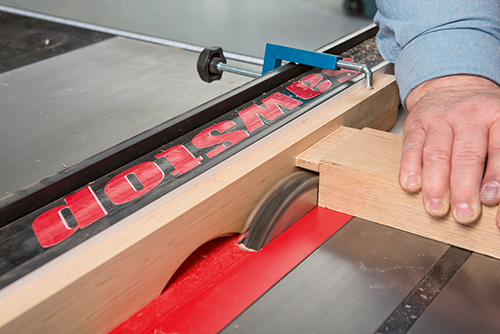
First off, I’d like to thank you for a great magazine. I’ve been reviewing the August 2010 issue, in particular the Benchtop Mortisers article. This was very informative. My question concerns the tenon. Have you ever compared the “tenon” jigs/machines that are out there? I’ve done web searches but have not really come up with much info that compares tenon jigs? Can you offer a suggestion? – David Walsh
Rob Johnstone: If you want to make mortise and tenons, without a doubt the workhorse joint of woodworking, you have a wide range of tools and jigs from which to choose – everything from chopping and cutting them by hand to super-fancy machines. The Leigh Super FMT Mortise and Tenon Jig is a very cool system that allows you to make both the mortise and the tenons using the jig and a handheld router. Although it’s not overly complicated, you will need to take a bit of time to learn how to set it up and to use it effectively. After that, it is as slick a system as I’ve seen. The mortising machines that we reviewed in August 2010 only form a mortise — you have to make the tenon on another piece of equipment. Many woodworkers use their table saw and either a purchased or a shop-made tenoning jig. It is a very workable system that allows you to make a very traditional mortise and tenon joint.
The Leigh FMT jig costs around $500. The combination of a mortising machine and a store-bought tenon jig will run you in the $400 to $600 dollar range (these are all very round numbers here…don’t hold me to them). Another tool that will make strong M&T joints with a very slight learning curve is the Festool Domino — which runs into the $800 to $900 dollar range. At the lower end of the price spectrum is the BeadLock system — going for around 20 to 50 bucks. It is a very basic loose tenon system, but it works and is highly affordable. I don’t personally recommend any of them — I don’t want to inject my personal bias into the discussion because of my job as the editor in chief of a woodworking magazine that reviews these various machines and tools from time to time. Hope this helps.
Tim Inman: Unless you’re into a real production environment with one setup for a continuous run, I’d skip the commercial jigs and just use my table saw and a tenon jig. I made a plywood jig many many years ago, and I’ve used it ever since. Ugly, but quick, handy, satisfying to use – and cheap. When you’re trying to make a profit at this game, cost control is very important. Spending for something you use only once in a while isn’t sensible unless that expense is really helpful and will help you pay itself back pretty quickly. Or, if you just like to have a lot of really neat tools around, just in case, then that’s different. (I have lots of tools I just admire, while I remember having used them once, long ago, I think…)
Chris Marshall: My favorite way to cut tenons is with a table saw, dado blade and a miter gauge. It’s easy to do and inexpensive, plus you can fine-tune the tenon size by carefully adjusting the saw. I own a dedicated tenoning jig but still tend to lean toward the dado blade method anyway.







